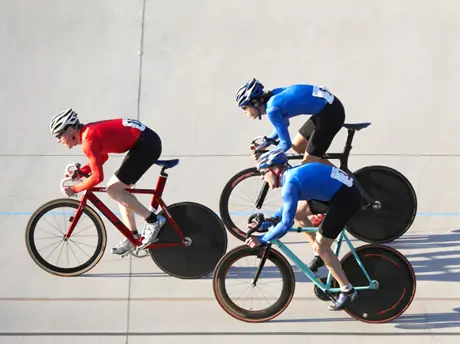
Most cyclists log many miles alone or with only a few other people. Only later, as they meet other fellow cyclists, do they start riding in larger groups of friends. These group rides are generally unorganized, with each rider taking random turns at the front for no predetermined amount of time.
Whether or not you have thought about it or researched the dynamics of effective paceline riding or understand the very basic principles of how slipstreaming can significantly reduces the work-load of each rider over all, it is important to understand the other benefits to paceline riding and when you should use them.
More: Riding in a Paceline is a Basic Cycling Skill
There are several types of pacelines and several rules of thumb intended to help the entire group think as a single entity in order to conserve energy and move as fast as possible.
Generally there are pace lines, rotating pace lines (clockwise or counter clockwise), echelons, and double pacelines. Each type of pace line has its own intricacies and different physics involved within each type. But first I need to discuss why drafting, or slipstreaming, is such an effective tool in cycling.
More: How to Ride in a Paceline
The draft area behind another rider is a sweet spot where the wind is partially blocked-essentially pulling a rider forward, so that not as much effort needs to be exerted in order to propel motion. This area may also be known as a "fluid wake", with the fluid either being air or water. This all works because of the relative motion of the "fluid" in the slip-stream.
The Basic Pace Line
A basic paceline is what most riders use on casual rides. One rider sits on the front of a line of riders for a determined or undetermined amount of time. The rider pulls off at some point and moves to the back.
The basic paceline isn't to be confused with a rotating pace line, which is much more affective. A basic pace line is generally for a team of riders that aren't all at the same level of cycling. It isn't complicated and the stronger riders can take longer or most of the "pulls" at the front of the pack.
More: Drafting Principles: Improve Your Ride Economy
A rule of thumb is to have a set amount of time each rider is to pull when riding like this. For example, in a group of riders we could say John Doe is stronger than Jane Doe, Nancy, and Bill. John might take 1-minute pulls while everyone else takes 45 seconds at the front of the group. Let say Jane climbs better than everyone, so she might lead the team up the climbs and since Bill is a monster on the flats, so he might take long pulls on the flatter sections.
In essence, everyone does what they can do to keep the group moving together at a speed that will suit all riders in the group.
- 1
- of
- 3








Discuss This Article